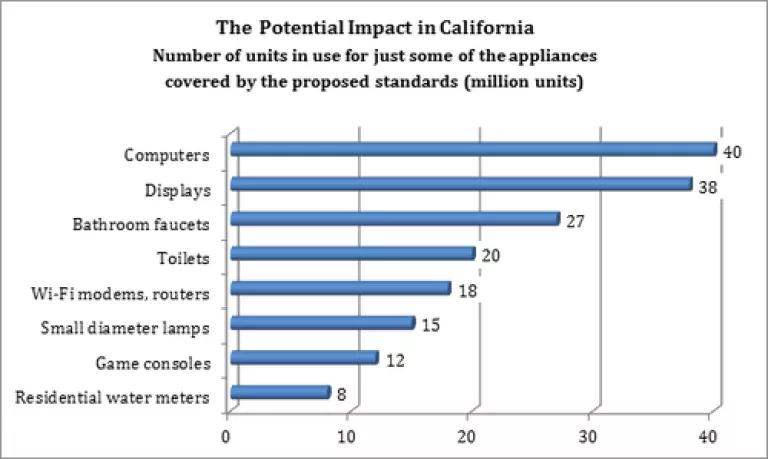If California Sets Energy Efficiency Standards for 15 Products, They Could Set the Bar for the Nation

Anyone who installs a bathroom faucet, purchases a computer, acquires the latest video game console, enjoys high-speed Internet service, and/or is lucky enough to buy a new swimming pool or hot tub could save money on their utility bills if the California Energy Commission sets new energy-saving standards for these and 10 other products used in our homes and businesses.
Monday (July 29) is the deadline for interested parties to submit standards proposals for a total of 15 products that cumulatively could save Californians a whopping $1.2 billion annually on energy and conserve as much water as the residents of San Diego use in an entire year.
Photo of San Diego by Jan Drewes under Creative Commons licensing.
That’s pretty impressive. The pollution savings are inspiring, too: The Commission’s figures indicate that requiring all these products to use less electricity, alone, could avoid the need to build three medium-sized, 500 megawatt power plants.
Instead of having our toilets and urinals flush away savings, and old-technology light bulbs convert most of the energy they use into heat instead of light, these and other products would be improved so they require less energy to do the same or a better job.
Every Californian would benefit from these new standards directly and/or indirectly. Not only will they save money for utility bill payers, they’ll help cut the power-plant pollution that endangers our children’s health and turbocharges the increasingly extreme weather events we’ve experienced so many of in recent years.
For all these reasons, as an active participant in the standards creation and review process—NRDC is among the utilities, manufacturers, and other parties submitting standards proposals for each of the products. After Monday, the California Energy Commission will review the submissions as it considers whether to establish improved efficiency standards which could become effective as early as 2015 for the 15 consumer electronics, lighting, water devices, and “miscellaneous” appliances.

Because our Golden State standards can be implemented more quickly and efficiently than national ones, and because manufacturers don’t want to lose out on the lucrative market in California, which is home to one in eight U.S. residents, these standards are all the more important. Effectively, they set the bar for the nation as a whole.
Take the small network equipment in our homes. Currently, there are no efficiency standards for them. That’s a significant lapse. These broadband modems and WiFi routers are energy hogs, eating up almost 100 kilowatt-hours of electricity annually—more than a new, energy-efficient 32-inch TV. Most small network equipment today draws the same amount of power when doing nothing while you’re asleep as these machines do when transmitting large amounts of data.
Computers present another opportunity for significant savings. In California alone, there are about 40 million of them, using approximately 2.5 percent of the state’s electricity. Desktops and their monitors use four to five times the amount of energy as equivalent laptops, in part because, unlike portable computers, they’ve got constant access to wall sockets so there’s less incentive to design them to conserve. New standards can make them considerably more efficient, and save consumers money as we surf the Internet, read email or play games.
On products like toilets, visualize this: California’s 38 million residents use about 27 million of these commodes each year. That’s a lot of flushes. In fact, they account for about 30 percent of California’s residential water use. But there are great savings to be had with new and highly functional water-saving toilets, like the dual-flush models that are increasingly popular.
Here’s the breakdown of all the products under consideration:
- Consumer electronics: Computers, displays (computer monitors, digital picture frames), video game consoles, set-top boxes (such as those used with cable or satellite service), and small networking equipment (like broadband modems and WiFi routers).
- Lighting:Fluorescent dimming ballasts, light-emitting diodes (LEDs), and small diameter lamps like those in track lighting and recessed cans.
- Water: Faucets, toilets, urinals, and water meters.
- Miscellaneous: Commercial clothes dryers, air filters, residential pool pumps and motors, and portable electric spas (hot tubs).
The California Energy Commission has a great opportunity to save Golden Staters money on energy and conserve our increasingly precious water resources. By implementing standards for all of these products, they’ll send the right signal to manufacturers. And they’ll help clean the air our kids breathe and reduce global warming, even as our state’s economy and population continue to grow.
In the weeks ahead I’ll be taking a closer look at these important products. Among the first will be computers and displays.
